Robert Gorter, MD, PhD, emeritus professor of the University of California San Francisco Medical School (UCSF)
On request of the speaker of the parliament of Lebanon his Excellency Dr. Nabih Berri, Robert Gorter visited Lebanon for the sixth time from August 21st through 25th, 2018.
His first visit to Lebanon was in 2003 when he met the President at that time, Emile Lahoud, at his presidential palace.


The PM at that time, Mr. Fouad Siniora, was very supportive of the idea to create thousands of jobs and re-enliven the cultivation of industrial hemp and possibly the production of various cannabinoids in the Bekaa.


Under the professional leadership of Mr. Ali Hamdan (Senior Advisor to Mr. Nabih Berri), the meeting with Dr. Nabih Berri took place on August 23rd 2018 and it had been prepared during the three days preceding the meeting.
https://www.lbcgroup.tv/news/news-bulletin-reports/397840/Lebanon-news-lbci/en

Section 1: Fiber (Industrial) Hemp
Industrial hemp contains less than 0.2% THC. In coffee shops, owned by the local city governments of Amsterdam and almost any city in the Netherlands, Hemp seeds can be obtained legally which will grow Hemp which contains up to 14% THC. Hemp seeds themselves do not contain any THC.
Hemp or industrial hemp (from old English hænep), typically found in the northern hemisphere, is a variety of the Cannabis sativa plant species that is grown specifically for the industrial uses of its derived products. It is one of the fastest growing plants and was one of the first plants to be spun into usable fiber 7,000 years ago. It can be refined into a variety of commercial items including paper, textiles, clothing, biodegradable plastics, paint, insulation, biofuel, food, animal feed and human nutrition. In addition, cannabinoids like CBD can be extracted from industrial hemp.
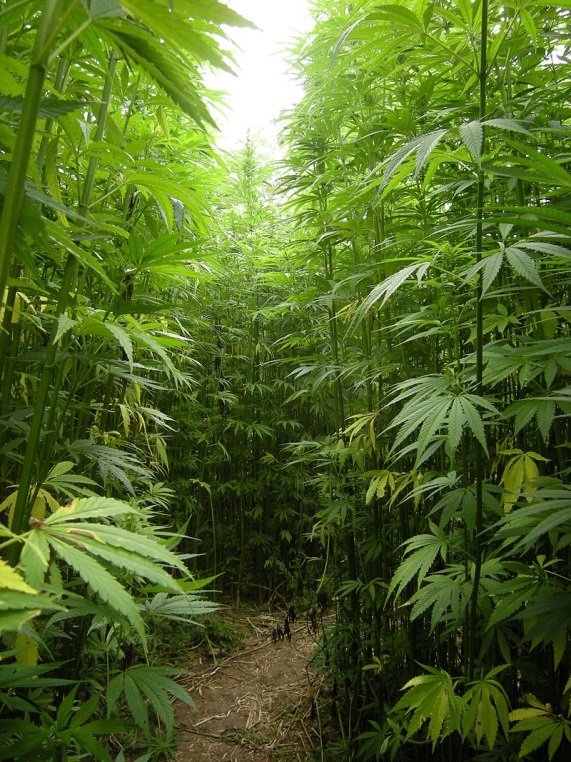
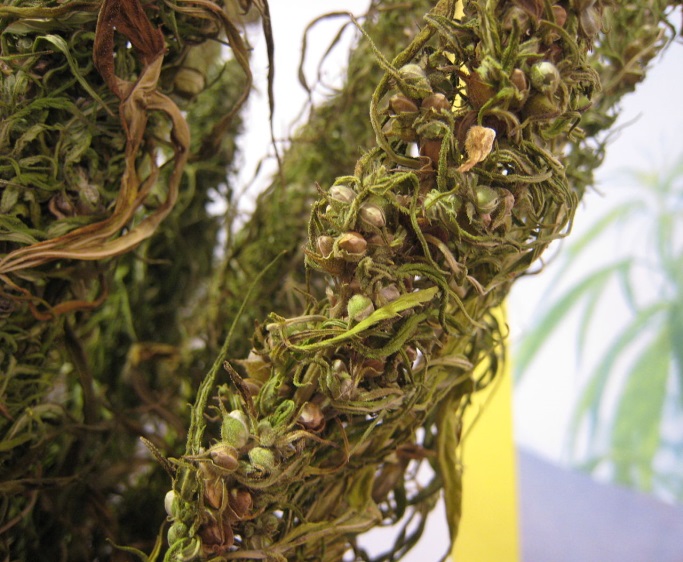
Fiber Hemp fields in Côtes-d’Armor, Brittany, France, and Hemp seeds
Although recreational marijuana and industrial hemp are both members of the species Cannabis sativa and may contain the psychoactive component delta-9-tetrahydrocannabinol (THC), they are distinct strains with unique biochemical compositions and uses. Hemp has lower concentrations of THC and higher concentrations of Cannabidiol (CBD), which decreases or eliminates its psychoactive effects. The legality of industrial hemp varies widely between countries. International law regulates the concentration of THC and permit hemp that’s bred with a low THC content: usually <0.2%.
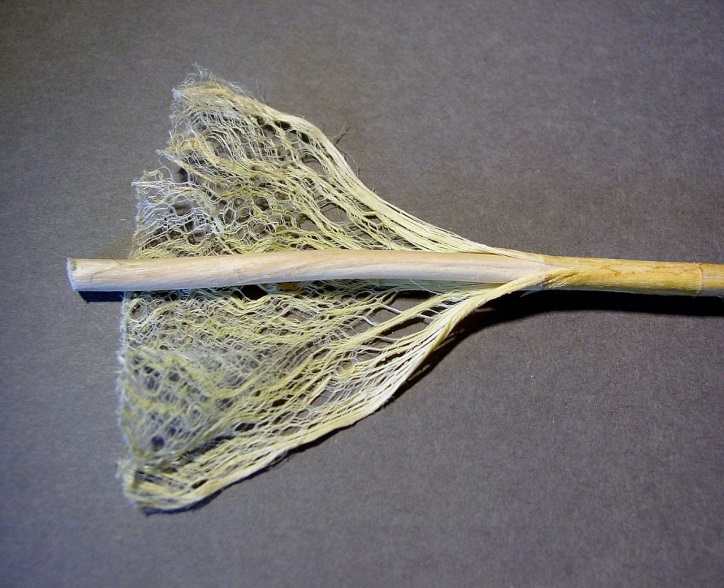
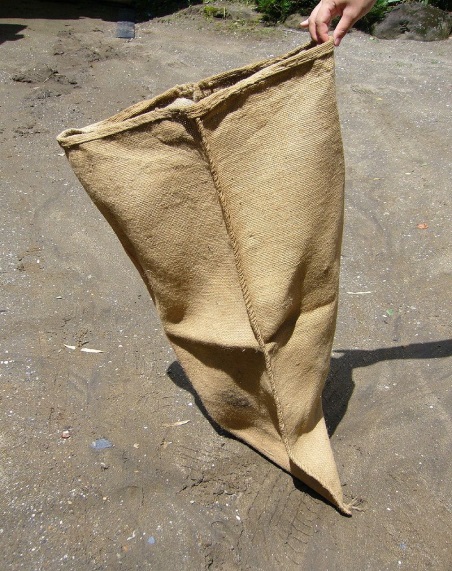
Hemp stem showing fibers and one of many end products: a sack for storage
Hemp seeds
Hemp is used to make a variety of commercial and industrial products including rope, clothes, food, paper, textiles, plastics, insulation and biofuel. The bast fibers can be used to make textiles that are 100% hemp, but they are commonly blended with other organic fibers such as flax, cotton or silk, to make woven fabrics for apparel and furnishings. The inner two fibers of the plant are woodier and typically have industrial applications, such as mulch, animal bedding and litter. When oxidized (commonly referred to as “drying”), hemp oil from the seeds becomes solid and can be used in the manufacture of oil-based paints, in creams as a moisturizing agent, for cooking, and in plastics. Hemp seeds have been used in bird feed mix as well. A survey in 2003 showed that more than 95% of hemp seed sold in the European Union was used in animal and bird feed.
Hemp seeds can be eaten raw, roasted, ground into a meal, sprouted, or made into dried sprout powder. The leaves of the hemp plant can be consumed raw in salads. Hemp can also be made into a liquid and used for baking or for beverages such as hemp milk, hemp juice, in beer and chocolate to give it its typical bitter taste and tea.
Hempseed oil is cold-pressed from the seed and is high in unsaturated fatty acids. In 2017, the U.S. imported approximately $600 million worth of hemp products, mostly driven by growth in demand for hemp seed and hemp oil for use as ingredients in foods such as granola.
In 2018, China is expected to by-pass France as the largest hemp exporter in the world.
Currently, there is a fast-growing market for hemp pulp, for example as high-quality paper. Hemp fiber is extremely durable and cannot rot. The pharaohs of ancient Egypt were all wrapped up and held together by hemp fibers and cloth made of hemp (canvas from Cannabis).
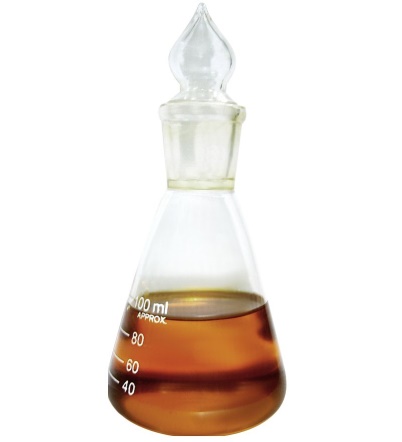
Biodiesel are made from the oils in hemp seeds and stalks and alcohol fuel (ethanol or, less commonly, methanol) from the fermentation of the whole plant. Biodiesel produced from hemp is sometimes known as “hempoline.”
The world-leading producer of hemp is China, which produces more than 55% of the world output in 2017. There is smaller production in Europe, Chile and North Korea. Over thirty countries produce industrial hemp, including Australia, Austria, Canada, Chile, China, Denmark, Egypt, Finland, Germany, Great Britain, Hungary, India, Italy, Japan, Korea, The Netherlands, New Zealand, Poland, Portugal, Romania, Russia, Slovenia, Spain, Sweden, Switzerland, Thailand, Turkey and Ukraine. As part of a campaign to stimulate sustainable agriculture, the European Union (EU) supports farmers who want to switch to the cultivation of fiber Hemp with 5.000€ per hectare.
Graphene
Graphene is an allotrope of carbon in the form of a two-dimensional, atomic-scale, honey-comb lattice in which one atom forming a vertex. It is the basic structural element of other allotropes, including graphite, charcoal, carbon nanotubes and fullerenes. It can also be considered as an indefinitely large aromatic molecule, the ultimate case of the family of flat polycyclic aromatic hydrocarbons.
Graphene has many extraordinary properties. It is about 100 times stronger than the strongest steel. It conducts heat and electricity efficiently and is nearly transparent. Graphene also shows a large and non-linear diamagnetism, even greater than graphite, and can be levitated by Nd-Fe-B magnets. Researchers have identified the bipolar transistor effect, ballistic transport of charges and large quantum oscillations in the material.
Scores of scientists have theorized about the properties of graphene for decades. It has likely been unknowingly produced in minute quantities for centuries, through the use of pencils and other similar applications of graphite. It was originally observed in electron microscopes in 1962, but only studied while supported on metal surfaces. The material was later rediscovered, isolated and characterized in 2004 by Andre Geim and Konstantin Novoselov at the University of Manchester. Research was informed by existing theoretical descriptions of its composition, structure and properties. High-quality graphene proved to be surprisingly easy to isolate, making more research possible. This work resulted in the two winning the Nobel Prize in Physics in 2010 “for groundbreaking experiments regarding the two-dimensional material graphene.”
The global market for graphene is reported to have reached $9 million by 2012 and 300€ in 2015 and 700 € in 2017 with most sales in the semiconductor, electronics, battery energy, telecommunications, super conductors and composites industries.
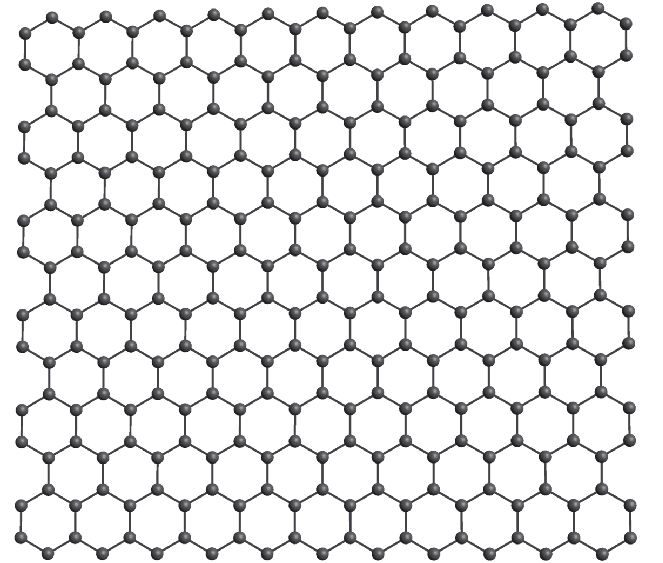
Conventional batteries store large reservoirs of energy and drip-feed it slowly, whereas supercapacitors can rapidly discharge their entire load.
They are ideal in machines that rely on sharp bursts of power. In electric cars, for example, supercapacitors are used for regenerative braking.
Releasing this torrent requires electrodes with high surface area – one of graphene’s many phenomenal properties.
Market Demand
Hemp fiber produced in the EU has gone to a variety of uses. However, most of the market information is rather anecdotal and suggests a niche market of limited scale. Examples of hemp markets in various Member States follow:
Hemcore, one of the largest hemp companies in England, currently contracts about 12,000 acres of hemp for hurd production (the woody inner core of the stalk) for use as horse bedding. Hemcore has also developed a new spinning technology. Another UK company, Friendship Estates, sells hemp bedding for the pet industry. The Bioregional Development Group in Surrey has developed flax and hemp fibers for textiles and paper production. The hurds and seeds could also be used for composite board, linoleum, and animal feed.
Hemp cultivation areas in Europe have expanded from 8,000 ha in 2011 to almost 25.000 ha in 2016 and 30.000 ha in 2017, which shows a triple increase in 5 years. The reason is the growing demand for different raw materials obtained from this outstanding multi-purpose crop. Hemp fibers are used in the automotive industry as well as in insulation and specialty paper production. They are particularly well established as material for natural fiber composites (NFC) used for the reinforcement of automotive interior parts. Due to their huge potential in light-weight construction, the demand for NFC has been growing continuously. Whereas exotic natural fibers from Asia are suffering from limited availability because of the local competition with food crops and temporary export bans, European hemp fibers can meet increasing demands – if the demand is communicated before the sowing time in March. Hemp seeds are becoming an important factor in both functional and supplement food industries. In 2015, hemp food products entered the mainstream market and were produced by well-known companies. Farmers in more and more European countries are discovering hemp as an alternative crop for the production of hulled hemp seeds, protein powder and oil with high nutritional value. Hemp seed is a nutritional powerhouse and is highly digestible. Its oil has an excellent fatty acid spectrum, it has the “almost perfect” balance of the omega-3 and -6 essential fatty acids plus the presence of two “higher” omega-3 and -6 fatty acids, stearidonic acid (SDA) and gamma linoleic acid (GLA), the share of unsaturated fatty acids is incredible 90%. The protein includes all 21 amino acids providing minerals, Vitamin E and is high in dietary fiber. In addition, the hemp crop produces Cannabidiol (CBD), a food supplement with therapeutic potential, which does not have any psychoactive effects. Many companies are globally investing in hemp as natural drug; this new natural medicine could reach at least a similar significance as valerian. The German company and EIHA member “Hanf Farm GmbH” is the first hemp producer worldwide to receive the “International Sustainability and Carbon Certification (ISCC PLUS)” for their hemp raw material “Hemp flower” and “Hemp nuts”. More certifications for different hemp products will follow this year, including those for the fiber. The European Industrial Hemp Association (www.eiha.org) is the organization of the European Hemp Industry. It represents cultivators, processors, producers and traders as well as scientists.”
European Industrial Hemp Association (EIHA) is a consortium of the hemp-processing industry. It represents the common interest of industrial hemp farmers and producers, both nationally and on a European level. EIHA is the only European consortium in the industrial hemp sector. This sector includes, amongst other things, the use of hemp fibers, shavings, seeds and cannabinoids. Although originally founded as an association for the European hemp industry, a quarter of the 130 EIHA’s members are based in countries outside the EU.
Industrial hemp is making its “Coming Back” in the EU, the USA and Canada. Hemp’s many uses from food to paper to cloth and clothing to modern technologies such as hempcrete are just astounding. The most ground breaking of these though is hemp “graphene.”
To explain, regular graphene is comprised of a two-dimensional, hexagonal honeycomb lattice layer of tightly packed carbon atoms, and is one of the strongest, lightest and most conductive compounds ever discovered. It is considered one of the best materials for supercapacitor electrodes. The term was also used in early descriptions of carbon nanotubes, and can be considered a type of nanotechnology. Many of graphene’s uses are in the area of energy storage; some uses that are under development include electronics, biological engineering, filtration and strong, lightweight composite materials.
However, a scientist by the name of Dr. David Mitlin from Clarkson University in New York says he’s found a way to manufacture hemp waste into a material that appears to be better than graphene. Dr. Mitlin and his team were able to recycle leftover hemp-based fiber, cook it down and then dissolve it until carbon nano sheets that resembled the structure of graphene were left behind. They proceeded to build these nano sheets into powerful energy-storing supercapacitors with high energy density, thus creating a hemp-based “graphene.” Essentially, Mitlin’s team discovered a process for converting fibrous hemp waste into a unique graphene-like nanomaterial that many say out-performs graphene.
Creating this graphene-like hemp material costs only a fraction of regular graphene production. Graphene costs as much as 2,000€ per gram to manufacture, while the hemp-based nanomaterial can be manufactured for less than approx. 500€ per ton. To give proper perspective; there are 1.000.000 grams in one ton.
Hemp professionals and activists in Oregon and elsewhere in the USA and the EU are thrilled about this new technology and its potential for energy. Ben Christensen, owner of Oregon Hemp Works in Portland, said, “As a renewable energy major and hemp business owner, I find this very exciting. One of the bigger challenges with renewable energy is storage. I often find hemp being left out of the renewable energy conversation, but I feel you can’t really talk about renewable energy or sustainability unless hemp is being talked about as well. It also seems that when hemp is introduced as a replacement, it is just as good as what it’s replacing and even better in a lot of cases.”
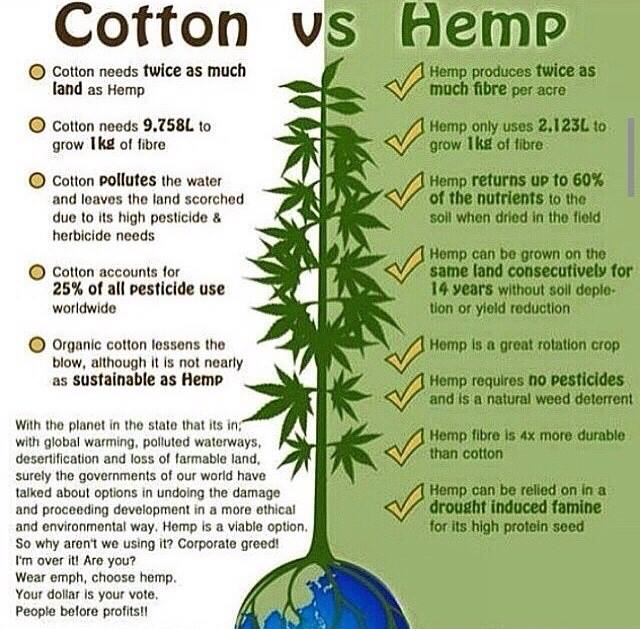
Most people don’t understand the truly diverse value of hemp. Cultures have relied on this hardy plant for centuries to produce textiles such as clothing, fabric and paper. Columbus could never have discovered the Americas without the canvas of his sailing ships; the oil to make the ship water proof; the seeds to nurture his crew and the paper for his log book. Today, hemp is also used for food, fuel, medicine, building materials, batteries, superconductors and plastics. Now, with the energy storage industry starting to take notice, perhaps more government authorities will take a closer look at this plant.
Car Industry
Hemp plastic is 40% lighter than aluminum and about 4 times as strong. Therefore, Hemp plastic will replace aluminum more and more in the near future.
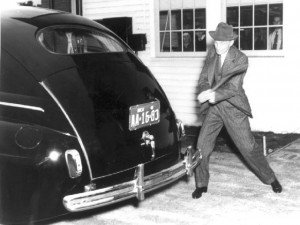



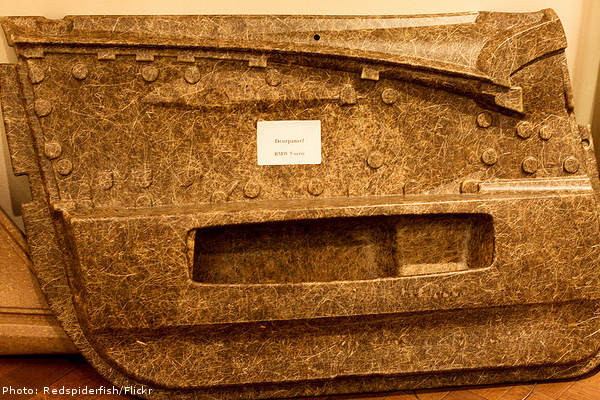


There are no pricing details yet because each car is uniquely made and assembled from a previous model with major parts made from fiber hemp. Jaguar Land Rover anticipates deliveries of the first electric E-type vehicles to start in the summer of 2020.
Dr. Gorter:
“The car industry came first; the aviation industry will follow. I predict that in 20 years, commercial airplanes made from hemp plastic with their turbines running on Hemp diesel (kerosene) will fly routinely around the world.”
Section 2: Medicinal Hemp or Marijuana (Cannabis sativa)
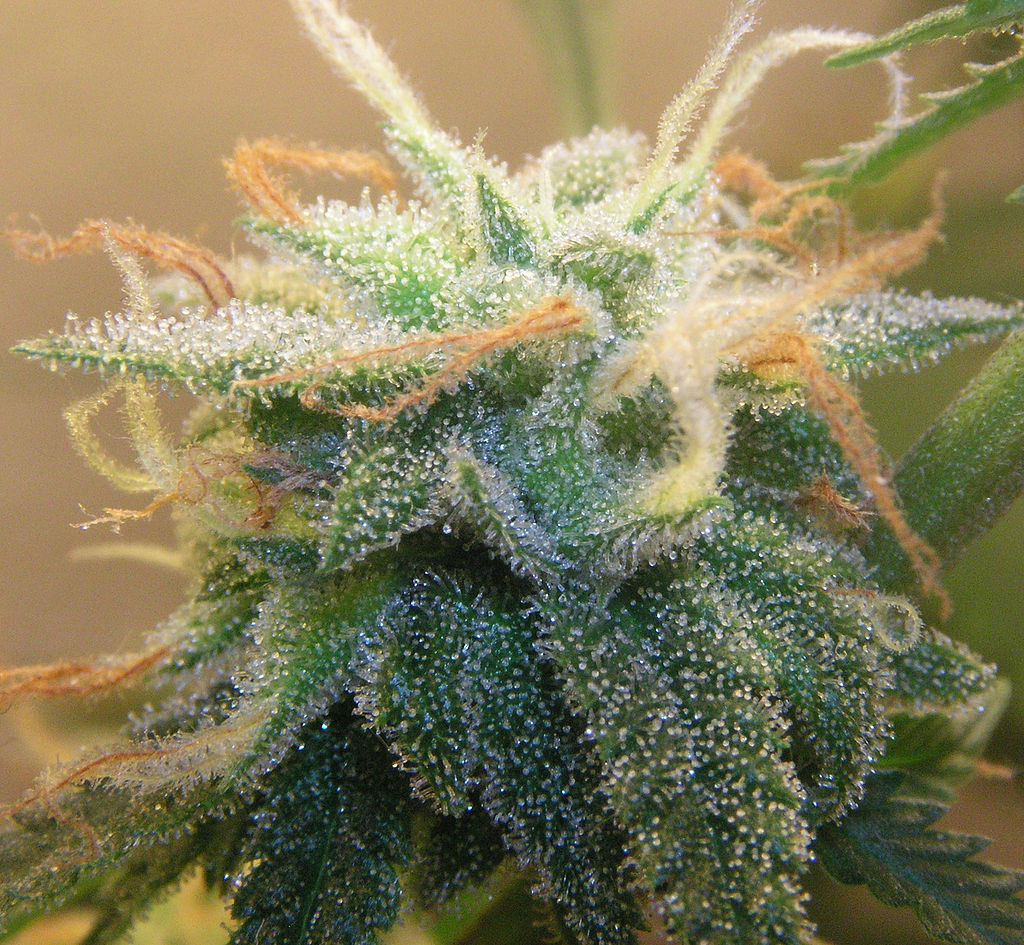
Medicinal Hemp has been defined as Hemp containing >0.2% THC. Usually, Medicinal Hemp is cultivated for its THC content which is the only Cannabinoid out of 111 isolated and well-defined Cannabinoids as of today which has psychotropic effects.
Table 1. Pharmacologic Characteristics of Some Main Cannabinoids
Effect | Delta-9-THC | CBD | CBG | CBN | Delta-8-THC |
Vomiting | ↓ | ||||
Appetite | ↑ | ||||
Spasticity | ↓ | ↓ | |||
Epilepsy | ↓ | ↓ | ↓ | ↓ | |
Migraine | ↓ | ||||
Pain | ↓ | ↓ | ↓ | ||
Eye Ball Pressure | ↓ | ↓ | ↓ | ↓ | ↓ |
Bronchial Dilatation | ↑ | → | → | ||
Bacterial Growth | ↓ | ↓ | ↓ | ||
Inflammation | ↓ | ↓ | |||
Relaxation | ↑ | ↑ | ↑ | ↑ | |
Urinary Excretion | ↑ | ||||
Gut Motility | ↓ | → | ↓ | ||
Core Temperature | ↓ | ↑ | |||
Coronary Flow | (↓) | ↑ | → | ||
Pulse | ↑ | → | ↓ | ||
Skin Sensitivity | ↑ | ||||
Psychotropic Effects | ↑ | ↓ | (↑) | ||
Survival various Cancers | ↑↑ | ↑↑ | |||
Anti-Aging | ↑ | ↑↑ | |||
Reverse and prevent dementia | ↑ | ↑↑ | |||
Increasing learning capabilities | ↑ | ↑↑ | |||
Duchenne Muscle Dystrophy (DMD) | ↑↑ | ↑↑ | |||
Preventing & treating Diabetes mellitus type 2 | ↑ | ↑↑ | |||
Opiate detox | ↑↑ | ↑ | |||
Treating insomnia | ↑↑ | ↑ |
Table 1 by Robert Gorter
For extensive information on CBD and THC see the “Expert Report” by Dr. Robert Gorter as an appendix to this report.
www.bbc.com/news/science-environment-28770876
www.nova-institut.de/bio/index.php?tpl=novalist
Appendix One
Expert report regarding the clinical use of CBD
by
Dr. Robert W. D. Gorter
Robert Gorter, MD, PhD, is emeritus professor at the University of California San Francisco Medical School (UCSF), etc.
Dr. Robert Gorter:
“CBD is a powerful COX-1 and COX-2 pathways inhibitor and therefore, CBD is recommended to apply in all diseases and symptoms where chronic inflammation plays an important role …”
Content
Cannabis sativa and the Endocannabinoid system
Cannabinoids and their receptors
Cannabidiol (CBD)
CBD in anxiety disorders and phobias
CBD in muscle tension and muscle pain
CBD in psychiatric disorders
CBD in epilepsy
CBD in Migraine
CBD in Parkinson’s disease
CBD in Cancer
CBD at Crohn’s Disease
CBD in Dementia and Alzheimer’s
CBD in (extreme) sports
CBD in Diabetes
CBD in Lupus Erythematosus Disseminates (LED)
CBD in Duchenne Muscle Dystrophy (DMD)
CBD in Multiple Sclerosis (MS)
CBD and Anti-Aging, lengthening telomeres and improving DNA repair
CBD in Attention Deficit Syndrome (ADAH)
References
The endocannabinoid system
Endocannabinoids are important neurotransmitters that are mainly present in the brain and are involved in many cognitive functions. Endocannabinoids were discovered by the investigation of the effects of cannabis.
Cannabis
Medicinal cannabis is extracted from dried flowers of the Cannabis sativa L plant. Cannabis contains various components, the most important of which are tetrahydrocannabinol (THC) and cannabidiol (CBD). But while the investigation of the effects of the different cannabinoids is being investigated, more and more cannabinoids emerge, which seem to have very positive physiological and medicinal effects. THC is usually the main component of the study but also CBD has many activities, which are now being discovered and tested in clinical trials. The effects and side effects of cannabis are determined by the composition if the plant is given in tota to the patient. If cannabis is used for medical purposes, one talks about medicinal cannabis. These must meet the highest quality requirements. (Cannabis Office, 2017) (NCSM, 2017)
Cannabinoids
Cannabinoids are divided into two categories: endogenous and exogenous
Endogenous are the body’s own substances. These substances are produced by our body. Endogenous substances regulate basic functions in our body such as various immune functions, sleep, hunger, mood and pain. They do this by generating reactions at the cannabinoid receptors (CB receptors).
Exogenous are substances from outside. Exogenous substances in cannabis include THC and CBD. These substances also interact with CB receptors. (Cassini, 2017)
Cannabinoid receptors
Two CB receptors have been identified so far, namely CB1 and CB2 receptors. Both receptors belong to G-protein-bound receptors (GPCR). These are the most common receptors. CB1 is mainly found in the central nervous system and is the most widespread GPCR in the brain. Activation of CB1 receptor protects the nervous system against activation or blocking by neurotransmitters.
CB2 receptor occurs in the white blood cells and is involved in the immune system. The function of these receptors includes modulation of the release of cytokines. Cytokines are responsible for inflammation and regulation of the immune system. CBD is a significant “COX-2 pathway inhibitor.” (Grotenhermen, Cannabinoids and the Endocannabinoid System, 2006)
Cannabidiol
By activating the GPCR, cannabidiol exerts a lot of effect. Natural cannabis products are normally inhaled or taken orally. Sublingual administration, transdermal delivery and eye drops have only been used in a few studies and have little relevance in practice. (Grotenhermen, Pharmacokinetics and Pharmacodynamics or Cannabinoids, 2012)
There are several scientific data that show that cannabis has a favorable effect in, among other things:
– Chronic, phantom and facial pain
– Muscle cramps and muscle twitching (in MS and spinal cord injury)
– Nausea, loss of appetite (anorexia), slimming (cachexia) and improved survival
– Hepatitis B & C, HIV / AIDS
– Therapy resistant glaucoma
– Duchenne muscular dystrophy (DMD)
– Malignancies (tumors)
– Chronic (but not acute) inflammations
– Epilepsy (various forms)
More and more data are available on efficacy in other disorders, but these have not been proven in definitive clinical studies. But so many phase-1 and phase-2 studies have been published that one can assume that these indications are also correct:
– Crohn’s disease
– Ulcerative colitis (inflammatory disease of the colon)
– Itching / Eczema / Atopic dermatitis
– Migraine
-Rheumatoid arthritis
– ADHD
– Parkinson’s disease
– Sleep disorders
– Menstrual cramps
– Asthma
– Alzheimer’s
– Anxiety disorders
– Psychological disorders
– Reactive depressions
– Significant improvement of DNA repair mechanisms (DNA repair)
– Anti-Aging
– Arrhythmias
(Cannabis Office, 2017) (NCSM, 2017)
CBD in anxiety disorders
For a long time it was thought that the use of cannabis as a soft drug could lead to anxiety disorders and schizophrenia. But cannabis also prevents anxiety and anxiety disorders. This appears especially in studies with CBD only in psychiatric patients with clinically relevant symptoms. One of the most common fears is speaking in public, or social anxiety disorder. Scientists have discovered after that CBD can effectively and safely inhibit this fear. (Gunduz-Cinar, Hill, McEwen, & Holmes, 2013) (Bergamaschi, et al., 2011)
Usually, these types of disorders are treated through cognitive behavioral therapies. However, this does not always help because these fears also have a hormonal cause. To treat this, anxiolytics (anxiety inhibitors) are needed. However, these types of substances are harmful and in itself addictive and are not always effective. (Bergamaschi, et al., 2011)
An important relationship between fear and CBD is the amygdala. The amygdala is an area in the brain that links information by the senses with fear and emotions. This part also provides the so-called fight and flight response. A study showed that many CB receptors are located in this part of the brain. The same study also revealed that stress reduces the natural production of endocannabinoids in our bodies. (Snyder, 2014)
CBD has an anxiety-inhibiting property. A group of scientists from Brazil investigated the impact of CBD on public speaking. (Bergamaschi, et al., 2011)
The study showed that the group at which 600mg CBD was administered per day significantly reduced anxiety and cognitive impairments. It was also tested against a placebo group. This group felt less at ease. So from this concluded that CBD has a fear-reducing effect on people with a social anxiety disorder. (Bergamaschi, et al., 2011)
CBD in muscle tension and muscle pain
Dyskinesia is the involuntary muscle movement that occurs when treating Parkinson’s disease. The symptoms of dyskinesia can occur when uncontrolled pulling or shaking. This can, with time, ensure that people cannot move extremely slowly or even at all. A specific form of dyskinesia can occur in Parkinson’s patients receiving long-term treatment with Levodopa. This form is called Levodopa dyskinesia. This form can ensure that patients move their hands and feet in a dancing form or have persistent contractions of muscles. Several studies have shown that the activation of CB receptors by administration of CBD, levodopa-dyskinesia and other motor problems greatly reduce. (Susan, Henry, Hill, Crossman, & Brotchie, 2002)
A 2014 study showed improvements in shake, stiffness and slow movement. There was also a significant improvement in sleep and pain scores. This study was conducted in patients who made long-term use of Levodopa. (Lotan, Treves, Roditi, & Djaldetti, 2014)
Cannabis (CBD) is the most effective drug according to patients suffering from fibromyalgia. Fibromyalgia is a disease that causes severe muscle pain and pressure sores all over the body, leading to sleep disturbances, fatigue and headaches. This condition cannot be cured and is difficult to treat. A study in the US showed that CBD is actually effective. 62% of people who use CBD for their condition indicate that they are fighting the symptoms very effectively. More than 60% of patients, Duloxetine (one of the pharmaceutical medications, administered in fibromyalgia) indicated that the drug had no effect, only 8% find the drug effective and 32% indicated that it helps a little. (National pain report, 2014)
Positive results emerged from a survey conducted in the US. This is the largest research on cannabis use ever. If one delves deeper into the section on CBD, one can see that no less than 80% of the respondents indicate that it is very effective. 54% of the respondents used CBD for joint pain, 35% for muscle tension with cluster headache and 32% for chronic pain. 66% of Respondents indicate that CBD is more effective than the usual medications prescribed and 42% of these have replaced their prescribed medication with CBD. (Brightfield Group and Hello MD, 2017)
CBD and DNA-Repair
Like with the European mistletoe (Viscum album) CBD has been documented to:
1) Significantly restore and improve DNA repair mechanisms after radiation and chemotherapy in cancer patients.
2) Increase the length of telomeres in cancer patients in remission, and in healthy individuals (Anti-Aging).
3) Lengthening of telomeres in healthy individuals at all adult ages (documented in volunteers even older than 75 years).
4) Increase of muscle mass in sport professionals and inhibition of muscle-mass decline in the elderly (documented up to 85 years of age).
5) Significant improvement of functional capabilities in all age groups
6) Studies strongly suggest that both the European mistletoe and CBD exhibit very similar biomedical mode of actions and clinical efficacies.
7) CBD and Viscum album protect against electro smog.
CBD in psychiatric conditions
In Canada, the scientists found results, for which they had not designed a study with CBD. The study was focused on chronic pain. It was to their surprise that CBD has an effect on physical and psychological / psychiatric symptoms. The group, which received CBD during the study, experienced significantly less pain and indicated that they had an increased quality of life. The participants actually surprised the scientists more with the fact that they had less anxiety, depression and fatigue. (Ware, Wang, Shapiro, & Collet, 2015)
Schizophrenia is a serious psychiatric disorder. Medication for this condition usually has many side effects such as liver and kidney damage, muscle spasms, restlessness, tremor and dizziness. Previous studies have shown that CBD can be an alternative to schizophrenia. CBD also has a very positive influence on learning ability, memory and attention. This means that the medicine could help with the symptoms without causing any harmful side effects. (Osborne, Solowij, & Weston-Green, 2017)
Depression is a very common condition. There are few drugs that help against depression. Antidepressants need a long time to prove efficacy. However, there are more and more patients who indicate that cannabis helps well and rapidly against their condition. It also appears from a study performed on mice that hyperactivity was reduced within thirty minutes of administration. Hyperactivity (mania) is a symptom of anxiety and depression in humans. (Linge, et al., 2015)
CBD in epilepsy
Several independent studies show that CBD has a beneficial effect in different forms of epilepsy. The patients treated with CBD saw a clinically relevant decrease in the number of seizures. In high doses, patients reported side effects like dizziness, fatigue, loss of appetite and constipation. (Vries, Ramcharan, & Lebbink, 2016) (Cannabidiol option in epilepsy, 2016)
In June 2018, the US Food and Drug Administration (FDA) approved of CBD for the treatment of seizures associated with Lennox-Gastaut syndrome and Dravet syndrome in patients aged two and older.
A large study with CBD in patients with epilepsy demonstrates good long-term safety and efficacy of the medication: in an open study with 72 children and 60 adults with different forms of treatment-resistant epilepsy adverse events decreased over time. Scientists of the Department of Neurology at the University of Alabama in Birmingham, USA, wrote that their prospective, open-level safety study of CBD in treatment resistant epilepsy “provides evidence for significant improvements in AEP (adverse events profile), CSSS (Chalfont Seizure Severity Scale), and SF (seizure frequency) at 12 weeks that are sustained over the 48-week duration of treatment.”
(Szaflarski JP, Bebin EM, Cutter G, DeWolfe J, Dure LS, Gaston TE, Kankirawatana P, Liu Y, Singh R, Standaert DG, Thomas AE, Ver Hoef LW; UAB CBD Program). Epilepsy Behav. 2018 Aug 9.
CBD effective in children with epilepsy
Researchers reviewed the experience with the first 40 children enrolled in the New South Wales (Australia) Compassionate Access Scheme for children with treatment-resistant epilepsy. Authors wrote that the “caregivers of 12 children felt the overall health of their children had much or very much improved; clinicians assessed seven children as being much or very much improved.” (Sydney Children’s Hospitals Network, Australia Chen KA, et al. Med J Aust. 2018 Aug 13.)
Atrial Fibrillation
A very positive correlation has been documented between Cannabis use and Atrial Fibrillation among patients who were hospitalized for heart failure. Atrial Fibrillation (AF) is caused by left ventricular dysfunction which triggers the activation of the sympathetic nervous system, providing inotropic support to the failing heart and concomitantly increasing the risk of atrial fibrillation. The cardiovascular effects of cannabis have been characterized as biphasic on the autonomic nervous system with an increased sympathetic effect at low doses and an inhibitory sympathetic activity at higher doses. In conclusion, cannabis users have lower odds of AF when compared with nonusers, which was not explained by co-morbid conditions, age, insurance type, and socioeconomic status.
(Am J Cardiol. 2018 Mar 28. pii: S0002-9149(18)30383-7. doi: 10.1016/j.amjcard / 2018.03.015)
CBD in Parkinson’s
A clinical study by the University of Sao Paulo in Brazil showed that the daily use of CBD significantly improved the quality of life and well-being of Parkinson’s patients. To measure the Parkinson’s Disease Questionnaire-39 (PDQ-39) was used to measure these data. This is a questionnaire in which patients answer questions about, for example, daily activities, emotional well-being, social support, mobility and physical discomfort. (Chagas, Zuardi, Tumas, Pena-Pereira, & Sobreira, 2014)
CBD in Duchenne Muscular Dystrophy (DMD)
DMD is caused by dystrophin deficiency, results in chronic inflammation and irreversible skeletal muscle degeneration. Moreover, the associated impairment of autophagy leads to the accumulation of damaged intracellular organelles that greatly contribute to the aggravation of the fatal muscle damage. Iannotti et al. explored the possibility of using non-euphoric compounds present in Cannabis sativa, including cannabidiol (CBD), cannabidivarin (CBDV) and tetrahydrocannabidivarin (THCV) to reduce inflammation, restore functional autophagy and positively enhance muscle function in vivo. New insights into plant cannabinoid interactions with TRP channels in skeletal muscle have demonstrated great potentials for novel co-adjuvant therapies, especially CBD, to prevent muscle degeneration in DMD patients (Br. J. Pharmacol. 2018 Aug 3. doi: 10.1111/bph.14460)
CBD in cancer
Animal studies have shown that CBD stops the development of tumors in the breast, lung, prostate and intestines (and probably all malignancies). CBD stimulates cell death in cancer cells and counteracts the multiplication of the diseased cells. The authors of the study concluded that on the basis of these results, evidence emerges that shows that CBD inhibits both the growth and spread of cancer. This is also easy to understand because CBD is a strong COX-2 inhibitor. (Pharmacol, 2016) (Massi, Solinas, Cinquina, & Parolaro, 2012).
Over the years, many in vitro and in vivo studies have shown the antineoplastic effects of cannabinoids (especially CBD), with reports advocating for investigations of combination therapy approaches that could better leverage these effects in clinical translation. Yasmin-Karim S et al. explored the potential of combination approaches employing CBD with radiotherapy (RT) or smart biomaterials toward enhancing therapeutic efficacy during treatment of pancreatic and lung cancers. In in vitro studies, clonogenic assay results showed greater effective tumor cell killing, when combining CBD and RT. Meanwhile, in vivo studies revealed major increase in survival when employing smart biomaterials for sustained delivery of CBD to tumor cells. (Front Oncol. 2018 Apr 24;8:114. doi: 10.3389/fonc.2018.00114. eCollection 2018).
Little research supports the use of Cannabis (CBD and THC) in oncology. Oncologists’ beliefs, knowledge, and practices regarding the medical use were examined in a study conducted 2016 by IM Brown, et al. Of all clinical oncologists 67% viewed it as a helpful to very helpful adjunct to standard pain management strategies and 65% thought that Cannabis (CBD and THC) is equally or more effective than standard treatments for anorexia, cachexia and pain management. (J Clin Oncol. 2018 May 10:JCO2017761221. doi: 10.1200 / JCO.2017.76.1221).
THC and CBD have been successfully applied in the “Gorter Model” since 2000. Multiple patients in their end-stages of cancer made a complete recovery and are still living up to 18 years now without cancer. www.gorter-model.org
CBD in Crohn’s Disease
According to a 2014 study, half of the patients with Crohn using cannabis went in complete remission. This study was conducted in patients with severe form of Crohn’s disease. The results of the study showed that the anti-inflammatory property of CBD is responsible for alleviating the symptoms. (Naftali, et al., 2013)
A CBD-rich cannabis extract improved symptoms of ulcerative colitis in a large controlled clinical study
Colitis Ulcerosa
A CBD-rich cannabis extract is beneficial for symptomatic treatment of ulcerative colitis. This is the result of a placebo controlled study conducted by scientists of Guy’s and St Thomas’ NHS Foundation Trust in London, UK. Of 60 patients 29 received a capsulated cannabis extract and 31 received a placebo for 10 weeks. Authors noted that the extract also contained a number of other compounds including up to 4.7% THC. Mean daily doses of CBD were about 300 mg, taken in two doses of 150 mg in the morning and evening, corresponding to an additional dose of about 14 mg of THC. (Irving PM, Iqbal T, Nwokolo C, Subramanian S, Bloom S, Prasad N, Hart A, Murray C, Lindsay JO, Taylor A, Barron R, Wright S: A Randomized, Double-blind, Placebo-controlled, Parallel-group, Pilot Study of Cannabidiol-rich Botanical Extract in the Symptomatic Treatment of Ulcerative Colitis. Inflamm Bowel Dis. 2018;24(4):714-724.)
Lupus erythematosus disseminates (LED)
Systemic lupus erythematosus is associated with an altered endocannabinoid system. Compared to healthy subjects, blood concentrations of the endocannabinoid 2-AG (2-arachidonoylglycerol), highest levels of 2-AG were associated with a lower disease activity. This finding strongly suggests that patients living with LED will significantly benefit by supplementation with CBD to restore the endocannabinoid production. (Department of Medicine, Campus Bio-Medico University of Rome, Italy. Navarini L, et al. Int J Biochem Cell Biol. 2018;99:161-168.)
Dr. Robert Gorter reported on 11/12 patients living with progressive systemic lupus who greatly improved both clinically and by surrogate laboratory markers and a biopsy in two patients within weeks to a few months after taking CBD 5-15mg orally.
CBD in Alzheimer’s
A study at Stanford University in California proved that a deficiency of endocannabinoids may be the cause of Alzheimer’s development. The active substances from cannabis have the same effect as the body’s own signal substances. (Orr, et al., 2014)
THC + CBD and CBD only in aging processes of the central nervous system
THC and THC in combination with CBD improve the learning process and memory in older mice and large clinical studies with patients have just started.
Researchers at the University of Bonn gave a combination of low-dose THC in combination with CBD to mice of different age groups. Compared with many younger mice, who received nothing, it was possible to document that the treated much older mice received the same mental performance (for example, with problem solving) and memory as the young mice. The conclusion was that small amounts of THC with CBD restored the cognitive functions of older mice to those of younger mice.
As a result of aging, the quality of the endocannabinoid system, also in the brain, decreases considerably and as a result moods, memory, problem solving and pain sensation are negatively affected. By giving THC with CBD in small amounts daily, the whole endocannabinoid system can be supplemented and restored to a normal level. (Andras Bilkei-Gorzo, et al. University of Bonn, Germany, 2017-2018)
www.independent.co.uk/…/cannabis-thc-memory-learning-improvement- benefits-mice-study-university-bonn-nature-medicine-a7724701.ht …
https://www.sciencedaily.com/releases/2017/05/170508112400.htm
CBD in (Extreme-) Sports
Top athletes overburden their bodies to the extreme. Independent of the kind of sport, during training and championships, the body suffers from micro-traumata in muscle, tendon and bone; during resting the phase, the usual repair mechanisms heal micro-traumata by setting free stem cells, cytokines and increased blood flow to repair what was damaged. Independent of the sportive engagement, athletes report on moderate to severe muscle and joint aches during and especially after training. And as studies in chronic traumatic encephalopathy (CTE) have shown these sensations of severe pain can last lifelong. Many professional athletes suffer from lifelong, disabling pains and discomfort leading to a significantly decreased quality of life.
For instance, almost all rugby, soccer and ice hockey player report that they have played with trauma during matches multiple times. Thus the question comes up: „How can athletes make a career and at the same time, maintain their quality of life and quickly repair trauma?”
Dr. Gorter: “After years of coaching extreme sportsmen in boxing, wrestling, martial arts and body building, I could observe and document that CBD had very positive effects and would lead to an increased number of obtained gold and silver medals in national and international championships.”
CBD in Diabetes
A study, published in the American Journal of Medicine, showed that active cannabis users have more productive carbohydrate metabolism compared to non-users. Patients who use cannabis process carbohydrates better than non-users. Carbohydrates cause the rise of blood sugar levels. The body of CBD users breaks down sugar in the blood faster. (Penner, Buettner, & Mittleman, 2013)
Dr. Gorter used CBD manufactured by Maripharm in Rotterdam, the Netherlands. www.maripharm.com
MariPharm products are being marketed and developed world-wide by PharmaNatura.
references
Bergamaschi, M., Queiroz, R., Chagas, M., Oliveira, D., Martinis, D., Kapczinski, F.,. . . Crippa, J. (2011, May). Cannabidiol reduced the anxiety induced by simulated public speaking in treatment-naïve social phobia patients. Retrieved from Pubmed: https://www.ncbi.nlm.nih.gov/pubmed/21307846
Brightfieldgroup and Hello MD. (2017, July). Understanding Cannabis / industry expert report. United States. Retrieved from https://cdn.shopify.com/s/files/1/1417/2022/files/CBD_-_HelloMD_Brightfield_Study_-_Expert_Report_-_FINAL.pdf?16390015042640509441
Cannabidiol option in epilepsy. (2016, 01 27). Pharmaceutical weekly.
Cannabis agency. (2017, 09 29). Medicanal cannabis. Retrieved from Cannabis Office: https://www.cannabisbureau.nl/medicinale-cannabis/patiënteninformatie
Chagas, M., Zuardi, A., Tumas, V., Pena-Pereira, M., & Sobreira, E. (2014, September 18). Effects of cannabidiol in the treatment of patients with Parkinson’s disease. Retrieved from journal or psychopharmacology: http://journals.sagepub.com/doi/abs/10.1177/0269881114550355?journalCode=jopa&
Robert Gorter., Management of Anorexia-Cachexia in Advanced HIV Dis-ease. Clinical Notes, PAACNOTES, volume 3, number 5, 1991.
Gorter RW., Experience with viscum album (Iscador) and Marijuana (Dronabinol) in: AIDS, eine Krankheit wird treatment bar; Materials for HIV-Erkrankung im 2. Jahrzehnt, Ecomed, Band III, p 167-171, 1993
Gorter RW., Medikamentöse Beeinflußung von Stoffwechsel und Appetit, in: HIV-Medizin: Möglichkeiten der individualisierten Therapie. Wissenschaftliche Ergebnisse in der Mitte der 90er Jahre. Jäger (Hrsg.), Ecomed, Band IV, p. 233 – 238, 1994
Gorter RW., Management of Anorexia-Cachexia Associated With Cancer and HIV-Infection, International Conference on Bioresource Hemp, Frankfurt, Germany, March 1995, Proceedings Vol. I
Gorter, Robert W, Cannabis bei Anorexia and Kachexie von Krebs and AIDS Patients In: Cannabis and Cannabinoid as Medizin, ISBN 3-9805840-4-6, 1997
Gorter RW, Cannabis and chronic Schmerzen. In: Abstract band Der
Deutsche Schmerztag 1998; 9. Deutscher interdisziplinärer Schmerzkongreß. p.26 – 28, Frankfurt am Main 4. – 8. März 1998.
Robert Gorter, Erfahrungen with Dronabinol (Delta 9 Tetrahydrocannabinol) oncological Patients with Anorexia-Kachexie-Syndrom in Der Schmerz (Dezember 2004) 18 (suppl.2); S31-S33. Springer Verlag.
Gorter, RW., Cannabis sativa in the medizinischen Betreuung von Drogen- gebrauchern / innen. 6. Deutscher AIDS Kongreß, Abstract Book; V156, p. 46, Munich, Germany, Oct. 1996 Gorter RW., Cannabis and HIV wasting. Third international conference on home and community care for living with HIV / AIDS, Abstract Book; O179, Amsterdam, May 1997
Gorter RW., Schnelle M., Stoss M., van Wely M; Cannabis and wasting in AIDS and cancer. International 1997 Symposium on the Cannabinoids, Abstract Book, p. 87, Atlanta, USA, June 1977
Gorter RW., Schnelle M., Stoss M., van Wely M.,; Cannabis zur Behandlung von Anorexie / Kachexie bij AIDS Patients – Toxicological Aspekt. In: Neue Perspektiven Therapeutic Erwartungen; Die Realität 1997; Monogra-phienic Band 6, p. 232 – 236, Munich July 1977
Robert W. Gorter, A whole-plant Cannabis extract for anorexia / cachexia in cancer patients. Joint Meeting British and German Pharmacological Societies Nottingham, UK, July 1999, Abstractbook page 8.
Robert W. Gorter, An observational study with Medical Grade Marijuana (MGM) in the Netherlands, International Cannabinoid Research Society, Ab-stractbook, page 111, Baltimore, June 22nd-24th, 2000.
Gorter RW, Practical medical applications of Cannabis and Cannabinoids. Archiv der Pharmazie Vol. 335 (Supplement 1) page 30, September 2002.
Killerstein J, Hoogervorst ECJ, Reif M, Kalkers NF, Van Loenen AC, Staats PGM, Gorter RW, Uitdehaad BMJ, Polman CM: Safety, tolerability and efficacy of orally administered cannabinoids in multiple sclerosis: a randomized, double-blind, placebo- controlled. Two-fold cross-over study. Multiple Sclero-sis, Vol 7, suppl 1, September 2001 (platform presentation 0-35).
Robert W. Gorter, A whole-plant Cannabis extract for anorexia / cachexia in cancer patients. Yoint Meeting British and German Pharmacological Societies Nottingham, UK, July 1999, Abstractbook page 8.
Robert W. Gorter, An observational study with Medical Grade Marijuana (MGM) in the Netherlands, International Cannabinoid Research Society, Abstractbook, page 111, Baltimore, June 22nd-24th, 2000.
Gorter R., Cannabis: Schmerztherapy (nor) in the Illegalität. In Schmerz Praxis Ratgeber / ZDF Gesundheitsmagazin. J. Apfelbach (Hrs.) Einhorn Presse Verlag 1996. ISBN 3-88756-800-1.
Robert Gorter, Erfahrungen with Dronabinol (Delta 9 Tetrahydrocannabinol) oncological Patients with Anorexia-Kachexie-Syndrom in Der Schmerz (Dezember 2004) 18 (suppl.2); S31-S33. Springer Verlag.
Robert Gorter, Mehr Lebensqualität für Patienten in ultimativen Situationen. In: 1. Colloquium Dronabinol-Therapy 2003. Delta-9-Pharma.
Grotenhermen, F. (2006, September 17). Cannabinoids and the Endocannabinoid System. Retrieved from Cannabis med: https://www.cannabis-med.org/data/pdf/nl_2006_01_2.pdf
Grotenhermen, F. (2012, September 30). Pharmacokinetics and Pharmacodynamics or Cannabinoids. Retrieved from Link springer: https://link.springer.com/article/10.2165/00003088-200342040-00003
Gunduz-Cinar, O., Hill, M., McEwen, B., & Holmes, A. (2013, November). Amygdala FAAH and anandamide: mediating protection and recovery from stress. Retrieved from trends in Pharmacological Sciences: http://www.cell.com/trends/pharmacological-sciences/abstract/S0165-6147(13)00163-6?switch=standard
Linge, R., Jiménez-Sánchez, L., Campa, L., Pilar-Cular, F., Vidal, R., Pazos, A.,. . . Diaz, A. (2015, December). Cannabidiol induces rapid-acting antidepressant-like effects and enhances cortical 5-HT / glutamate neurotransmission: role of 5-HT1A receptors. Retrieved from ScienceDirect: http://www.sciencedirect.com/science/article/pii/S0028390815302136#Cannabidiol%20induces%20rapid-acting%20antidepressant-like%20effects
Lotan, I., Treves, T., Roditi, Y., & Djaldetti, R. (2014, March). Cannabis (medical marijuana) treatment for motor and non-motor symptoms of Parkinson’s disease: an open-label observational study. Retrieved from Pubmed: https://www.ncbi.nlm.nih.gov/pubmed/24614667
Massi, P., Solinas, M., Cinquina, V., & Parolaro, D. (2012, April 17). Retrieved from https://www.ncbi.nlm.nih.gov/pmc/articles/PMC3579246/
Naftali, T., Bar-lev Schleider, L., Dotan, I., Lansky, E., Sklerovsky Benjaminov, F., & Konikoff, F. (2013, October 11). NCBI. Retrieved from Cannabis induces a clinical response in patients with Crohn’s disease: a prospective placebo-controlled study .: https://www.ncbi.nlm.nih.gov/pubmed/23648372
National pain report. (2014, March). National pain foundationn survey. Retrieved from National Pain report: http://nationalpainreport.com/national-pain-foundation-survey-march-2014
NCSM. (2017). Indications medicinal cannabis. Retrieved from NCSM: http://www.ncsm.nl/hoe-werkt-cannabis/bij-welke-klachten
NCSM. (2017, 09 29). Active substances in cannabis. Retrieved from NCSM: http://www.ncsm.nl/hoe-werkt-cannabis/werkzame-stoffen
Oláh, A., Tóth, B., Borbíró, I., Sugawara, K., Szollosi, A., Czifra, G.,. . . Bíró, T. (2014, July 25). Cannabidiol exerts sebostatic and antiinflammatory effects on human sebocytes. Retrieved from The Journal of Clinical Investigation: https://www.jci.org/articles/view/64628
Orr, A., Hanson, J., Li, D., Klotz, A., Wright, S., Schenk, D.,. . . Madison, D. (2014, June 18). β-Amyloid inhibitors E-S potentiation through suppression or cannabinoid receptor 1-dependent synaptic disinhibition. Retrieved from NCBI: https://www.ncbi.nlm.nih.gov/pubmed/24945775
Osborne, A., Solowij, N., & Weston-Green, K. (2017, January). A systematic review of the effect of cannabidiol on cognitive function: Relevance to schizophrenia. Retrieved from Pubmed: https://www.ncbi.nlm.nih.gov/pubmed/27884751
Penner, E., Buettner, H., & Mittleman, M. (2013, July 12). The impact of marijuana use on glucose, insulin, and insulin resistance among US adults. Retrieved from NCBI: https://www.ncbi.nlm.nih.gov/pubmed/23684393
Pharmacol, J. N. (2016, June 01). The antitumor activity of plant-derived non-psychoactive cannabinoids. Retrieved from NCBI: https://www.ncbi.nlm.nih.gov/pmc/articles/PMC4470774/
Snyder, B. (2014, March 6). Discovery sheds new light on marijuana’s anxiety relief effects. Retrieved from Research news at Vanderbilt University: https://news.vanderbilt.edu/2014/03/06/discovery-sheds-new-light-on-marijuana-anxiety-relief-effects/
Susan, H., Henry, B., Hill, M., Crossman, A., & Brotchie, J. (2002, December). Stimulation of cannabinoid receptors reduces levodopa-induced dyskinesia in the MPTP lesioned nonhuman primate model or Parkinson’s disease. Retrieved from Willey online libary: http://onlinelibrary.wiley.com/doi/10.1002/mds.10289/abstract?deniedAccessCustomisedMessage=&userIsAuthenticated=falseVan Dale. (2017, 09 25). Retrieved from van Dale: http://www.vandale.nl/opzoeken?pattern=Bijwerking&lang=nnVries, W. d., Ramcharan, A., & Lebbink, P. (2016, 10 21). benefits in therapy-resistant epilepsy. Pharmaceutical weekly. Retrieved from Pharmaceutical weekly magazine: http://www.pw.nl/achtergrond/2016/cannabidiol-lijkt-weldaad-bij-therapieresistente-epilepsieWare, M., Wang, T., Shapiro, S., & Collet, J. (2015, December 16). Cannabis for the management of pain. Retrieved from Pubmed: https://www.ncbi.nlm.nih.gov/pubmed/26385201